Some Notes on Ultralight Packing
I need to work on my packing strategies. Importantly, I’ve been learning that I pack too much stuff and that my packing is pretty disorganised. I needed to figure out how lighten and organize my load.
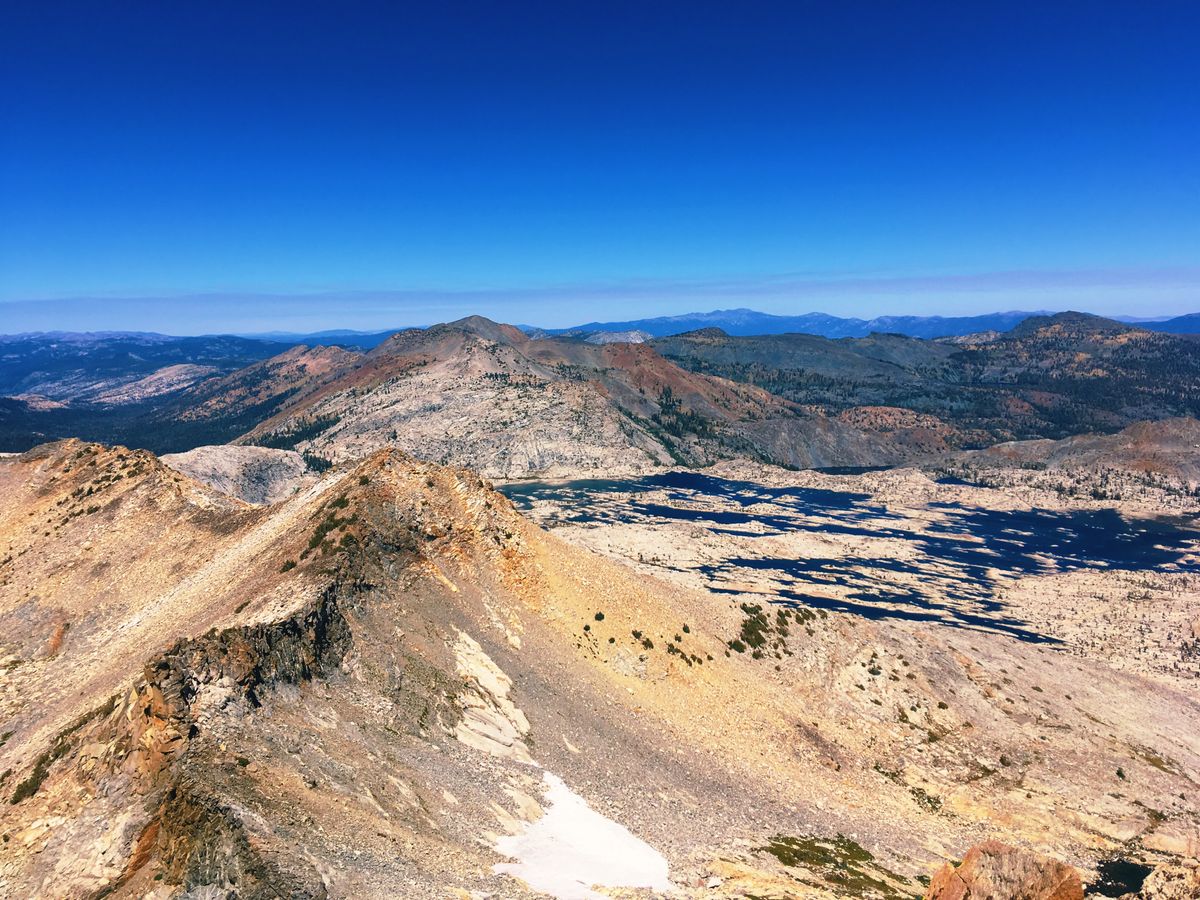
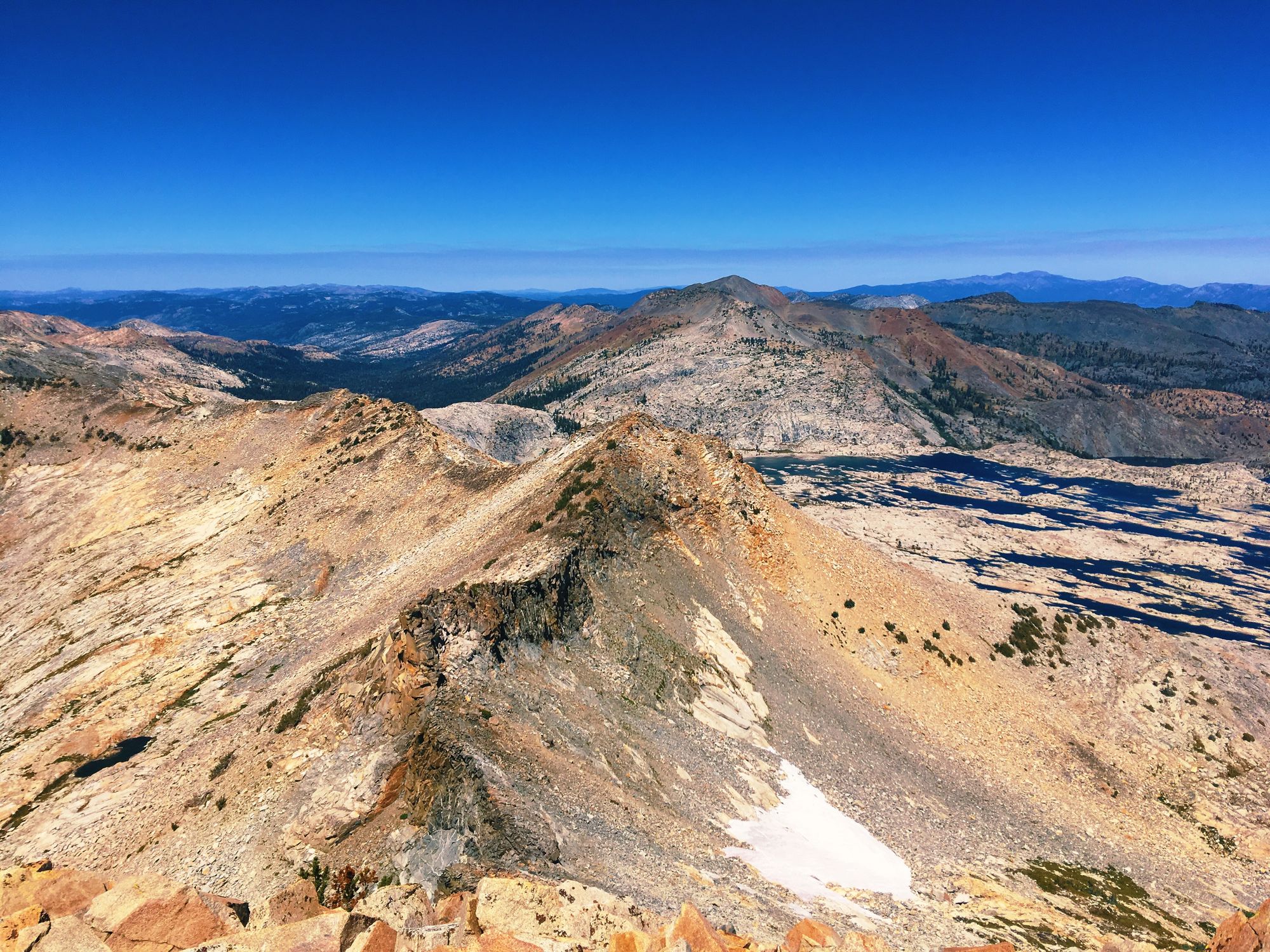
I’ve not been on as many backpacking trips or outdoors adventures this year as I would have liked and the trips I’ve been on have convinced me that I need to work on my packing strategies. Importantly, I’ve been learning that I pack too much stuff (which makes me move slower on the trails) and that my packing is pretty disorganised. I remember backpacking with a friend who could just drag around his 65L backpack after setting up his tent and sleeping bag and all and wishing my stuff was that well organised.
In particular, on a scrambling trip (getting up Pyramid Peak) and a multipitch climbing trip, I realised I needed to start learning how to do ultralight alpine approaches. I also realised that to do this I would need some new bags. Importantly, the Patagonia Ascensionist 25L bag I’ve been using as a daypack isn’t going to cut it: it doesn’t have a hydration sleeve, and that would have dramatically helped out on the multipitch climb. My Gregory 65L bag did okay on the trip into the camp site for the scrambling trip, but I think I can do lighter and still have a bag that can serve as a daypack and a backpack.
As a baseline, my current packs and typical weight are:
- A Gregory Baltoro 65L backpack that typically ends with a trailhead weight of about 40 lbs. This replaces my Kelty 55L and 90L bags, which didn’t fit so well. The 90L also has a broken chest strap. The extra volume would be useful for winter camping, so I’ll probably need to find a replacement for then. I usually pack this with a 3L hydration pack.
- An Osprey Duro 15 trail running pack. This was overstuffed for the scrambling trip. 20-25L would be good; my 3L hydration pack from the Gregory didn’t really fit well in it.
- The Patagonia Ascensionist that I’ve used as a multipitch daypack. It doesn’t have a hydration pack, so I have to open it up and take out one of my water bottles—while at a belay station hanging off the wall. It’s pretty awkward.
I ended up picking up a pair of new bags with the weekend sales going on:
- A Mountain Hardwear Scrambler 30L backpack. This seems like more of a daypack, and I got it more to use it in that capacity for scrambling and multipitch climbs.
- A Black Diamond Speed 50 backpack. This hasn’t shown up yet, but looks like a great, versatile crossfunctional bag.
This weekend, I was able to pack the Scrambler for a two night backpacking trip, with the idea that I could arrive Friday night and set up camp, then have all of Saturday and most of Sunday. I don’t have a tent attached to the pack yet, but it seems straightforward, and will add about 3.5lbs to the total weight. As it stands, I have everything but the tent (food and water included) with a total weight of 21.03 lbs which is phenomenal. It will probably still be under 25 lbs with the tent. It’s also amazing how the 30L size constraint forces you to be precise and specific in what you choose to bring along.
What does this look like?
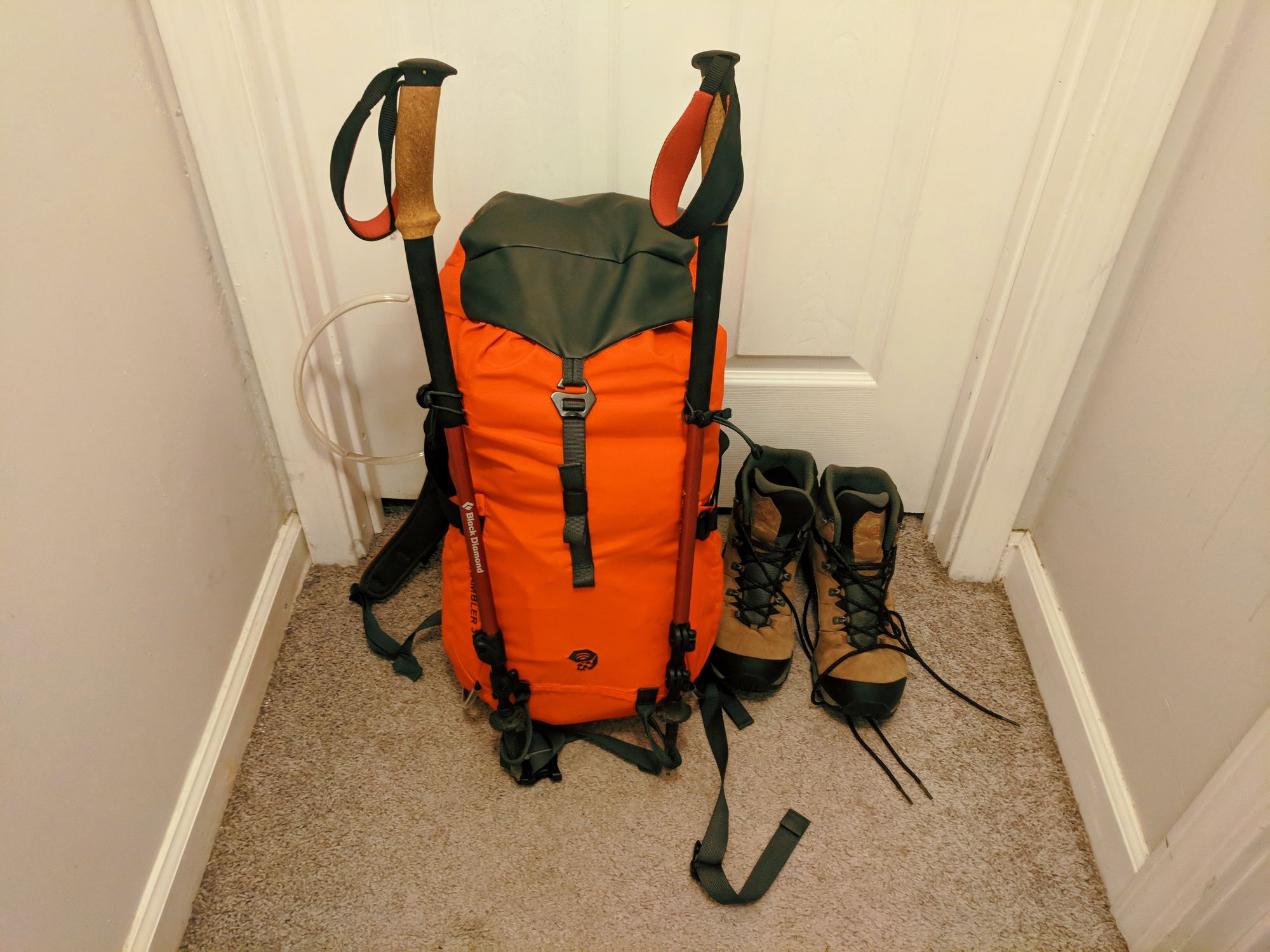
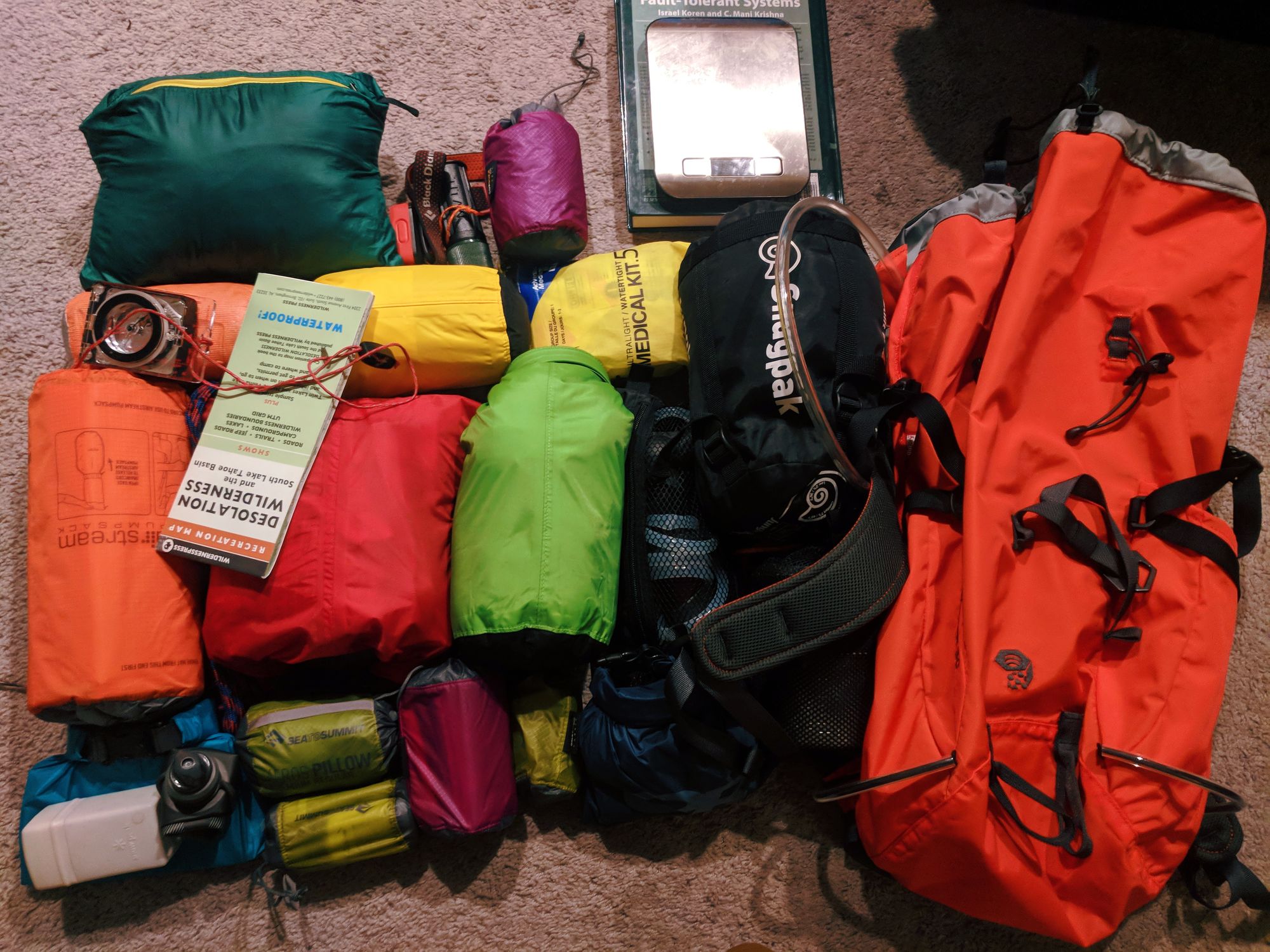
As part of the process, I weighed everything - most things on a kitchen scale, but a few I had to use my bathroom scale for. The full list of everything is in this spreadsheet.
Note that this loadout is useful only under certain conditions:
- The low temperature has to be above about 35° - I’m not bringing a lot of cold weather gear, and even that requires the bivy sack around my sleeping bag and at least the bivy hoodie.
- I’m not expecting anything but light drizzle at worst for the trips I’m likely to do.
What are the trade-offs I had to make?
- I’m using backpacker meals (e.g. the “just add water” ones) to save weight. I love bringing couscous and actual breakfast on the trip, but this cuts down on weight and I can suspend everything with the cordalette instead of bringing a bear can.
- I’ve switched to using a single pot and measuring cup instead of bringing a cookset. This cuts down on weight but means I can’t really cook. The measuring cup can be used as a coffee cup, which is nice, but not strictly necessary for this loadout. The pot does make a convenient carrying case for a bunch of stuff, though.
- I’m using a smaller stove instead of the JetBoil. The JetBoil adds almost a pound, which isn’t bad and I usually find the convenience worth the weight, but I don’t have the space for it.
- I’m relying on layers for warmth. I have a SmartWool base layer that goes over top of my t-shirt, and a Black Diamond Alpine Start hoodie that goes over top of that. The Ghost Lite is field tested as a superb light wind shell that also adds some water proofing. It was my only shell on the Pyramid Peak trip and it held up well. I’ve also worn it in the rain, where it will do fine in light rain. If I really need to, I can warm up in the bivy hoodie. I know from experience that my legs aren’t usually what gets cold, so I’m not bringing any warmer lowers along. Also from experience, I think this will work, but I’m a little concerned that it’s too light for the higher altitude stuff and given that it’s later in the year.
- Having only 3L of water max (a 2.5L hydration pack with a .5L collapsible water bottle) means I have to plan stops by water to filter more. The water bottle is mostly for the hydration tablets. My 3L hydration bag just barely doesn't fit in, otherwise I'd use it.
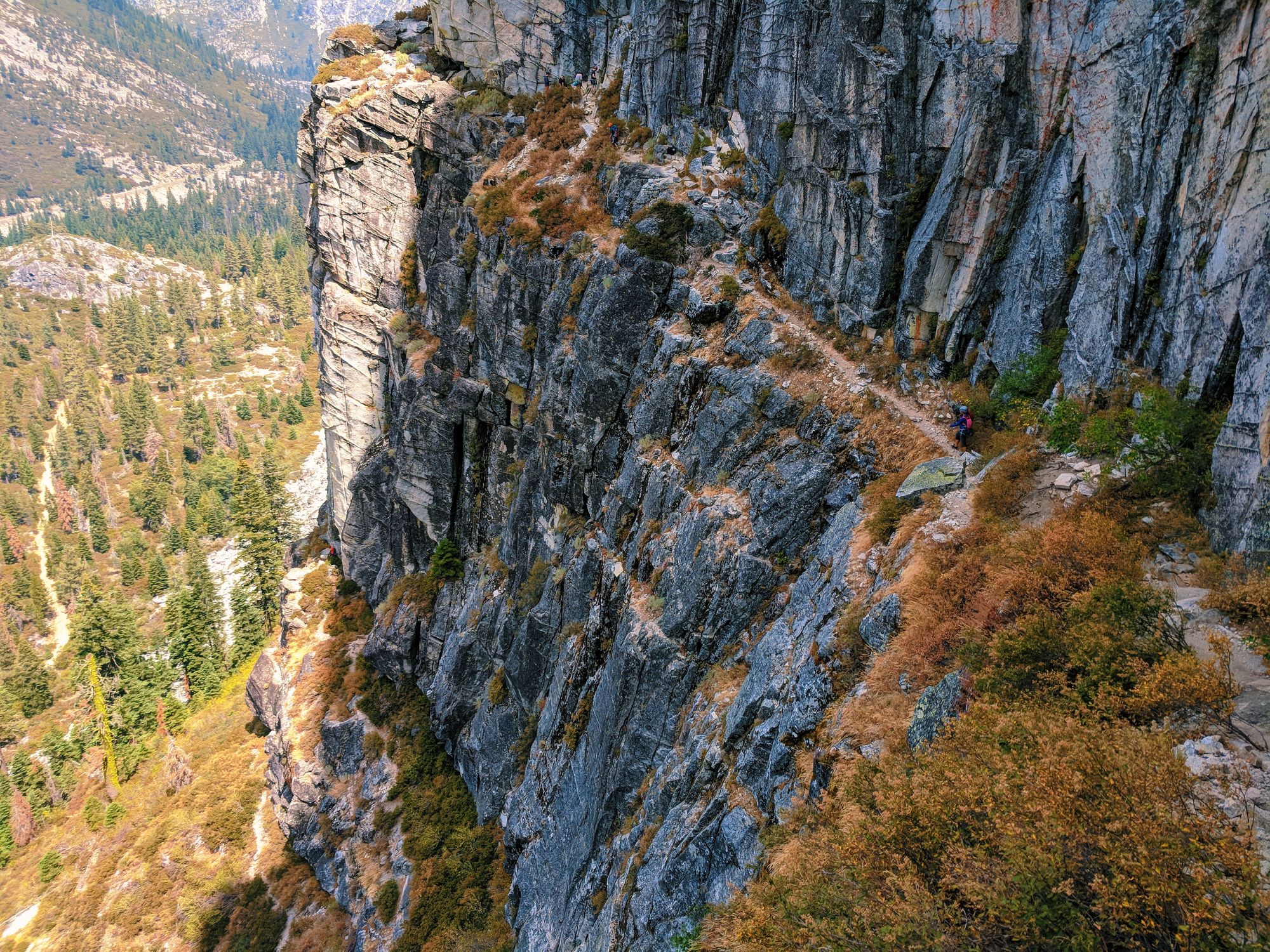
What do I hope to achieve with this? For starters, the scrambling trip makes me want to do the whole ridge traverse, visiting at least three peaks (Pyramid Peak, Mount Agassiz, and Mount Price) in a weekend. To pull that off I’m going to have to be light and make a lot of ground—something that will be hard with a heavy, bulky pack. Whatever pack I take, I’ll probably have to take along fully loaded on some class 3 or class 4 scrambles.
I’m also hoping to do more multipitch and trad climbing, which brings its own challenge in the form of the amount of technical gear required.
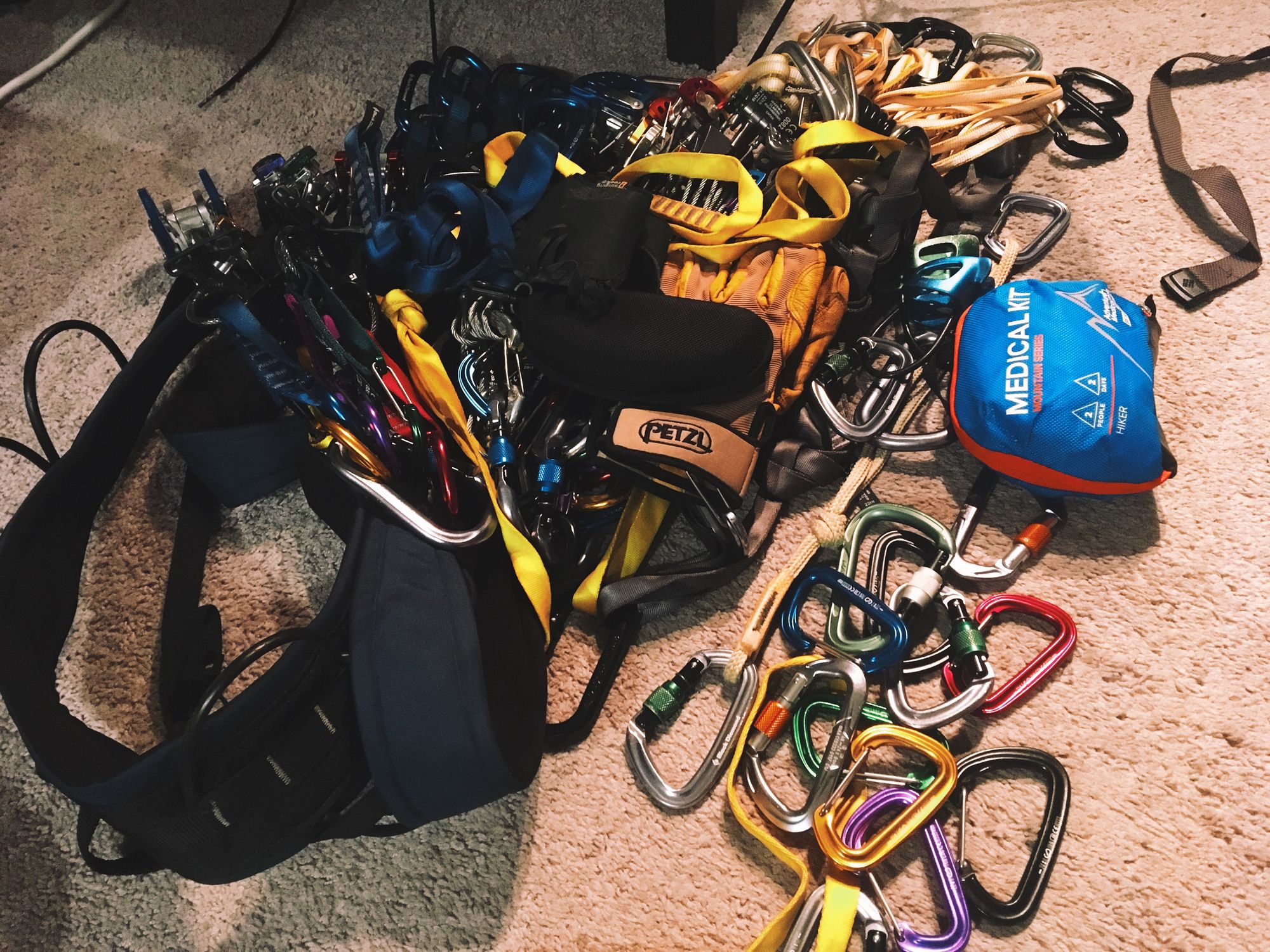
The photo above highlights the bulk of the gear that I have in my Patagonia Crag Daddy pack. I’ll need to carry much of this plus food and water for a on days where I’m leading trad. The Scrambler seems like just the right versatile pack for this - lighter for days following multipitch, but still able to carry a full load of gear for trad days. I’ll need to reevaluate my pack choices if I start doing multiday or alpine climbing (where you also have to backpack in), but it seems like the Speed 50 will do well there.
Caveat emptor: I haven’t had the chance to test this setup yet, and given that I’m going on call for two weeks, I probably won’t until maybe the end of the month.
At the end of the day, what I really want is to get out to the wild places and not have my gear holding me back.
Update 2018-10-01
A friend and I went for a weekender in Desolation Wilderness, up to Lake Lois and Doris Lake. It was too cold for this particular loadout, namely in that I had to go for a different sleep system and more layers - the added volume meant I had to use my 65L pack. The same general principles applied though and I for sure was still pretty light - right about 25 lbs by crossloading some gear with my friend.
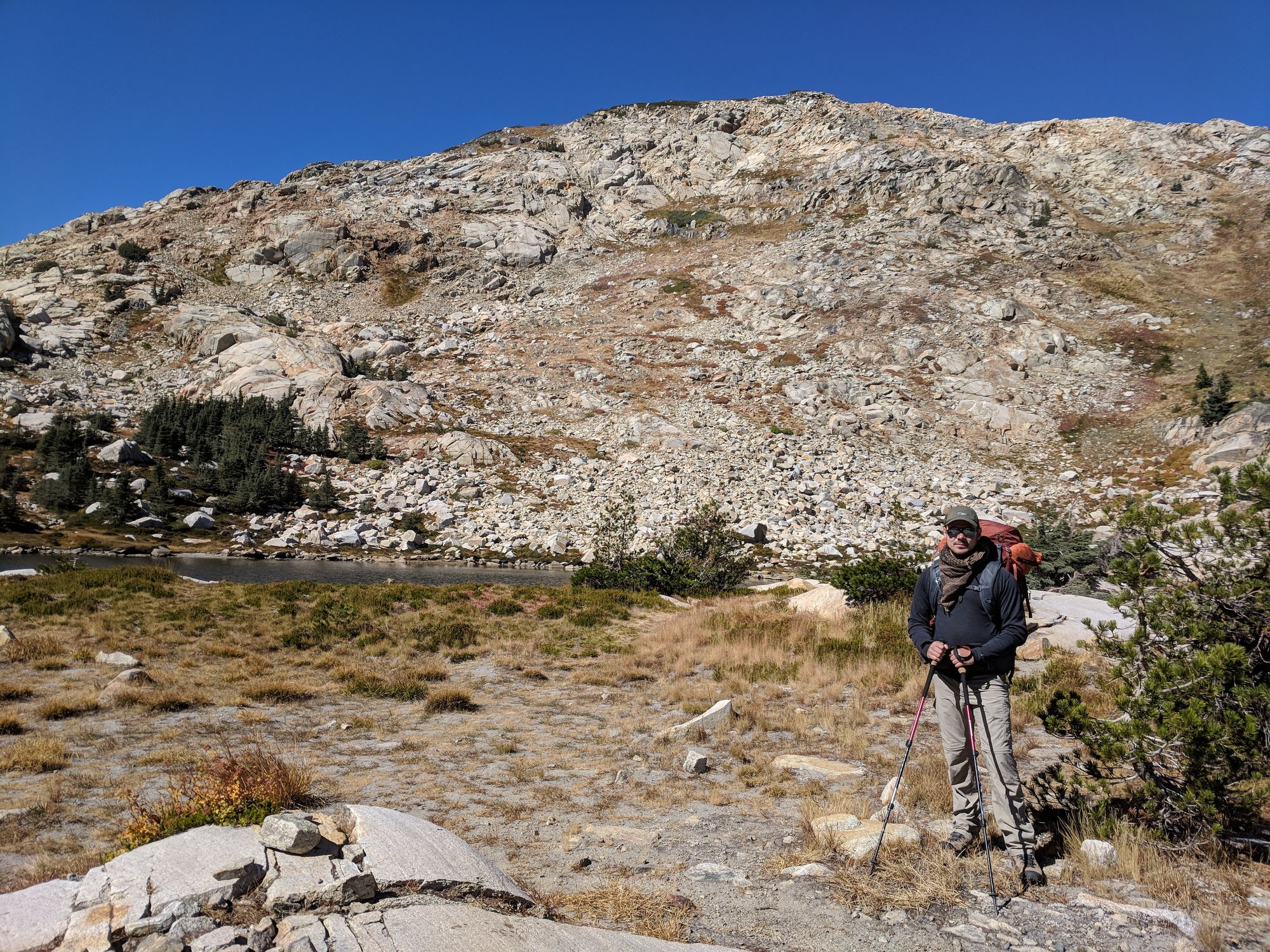
The Scrambler gear list
- Scrambler 30 OutDry Backpack
- Black Diamond trail ergo cork trekking poles
- SnugPak jungle bag
- SOL escape lite bivy sack
- HydraPak stow collapsible water bottle (500 ml)
- Snow Peak GigaPower stove
- Snow Peak titanium pot / cup with measuring cup in bag
- JetBoil JetPower 4oz 4-season fuel can
- Bic lighter
- MSR scraper / brush
- Plastic fuel can stand
- Sea to Summit small stuff sack (lunch items)
- 4x RxBar
- 1x Epic vension protein bar
- Dry bag (snacks)
- 4x Alpine Start instant coffee packets
- 2x Olove olive bags
- Swiss Miss dark chocolate hot cocoa powder
- Nuun energy hydration tablets (mango orange) x 12 tablets
- Snack bag of almonds
- Sea to Summit Aeros premium regular pillow with stuff sack
- Deoderant in stuff sack
- MSR HyperFlow water filter (sans Nalgene cap)
- Dry bag for base layer
- SmartWool quarter-zip 250 gpm long sleeve base layer
- Outdoor Research dry bag for notebook
- Hardcover Moleskine pocket notebook with pen
- Sea to Summit stuff sack for toiletries
- Travel toothpaste
- Travel toothbrush
- Travel beach defense 70 SPF sunscreen
- Natrepel picardin-based bug spray
- Toilet paper with carry bag in stuff sack
- Sea to Summit 2L dry bag for clothes
- Arc'teryx light toque
- 2x pair FitSok merino hiking sock
- 2x Patagonia Nine Trails short sleeve shirt
- 2x Under Armor boxers
- Patagonia down bivy hoodie
- Outdoor Research large dry bag with ziploc garbage bag
- AlpineAire Himalayan rice & lentils dinner
- AlpineAire pepper beef with rice dinner
- Mountain House freeze-dried breakfast skillet
- Quaker cranberry & almond protein oatmeal packet
- Quaker regular oatmeal packet
- Moon Cheese gouda
- Snow Peak titanium spork
- Sea to Summit Ultralight Sleeping Pad
- Black Diamond headlamp
- Titan stormproof matches (12 matches)
- Adventure Medical Kits ultralight / watertight 0.5 medkit (1 person / 2 days)
- Mountain Hardwear Ghost Lite hooded shell in stuff sack
- Map (representative)
- Suuntu MC-2 compass
- Sterling 5mm x 25ft accessory cord (cordalette)
- 2.5L hydration pack
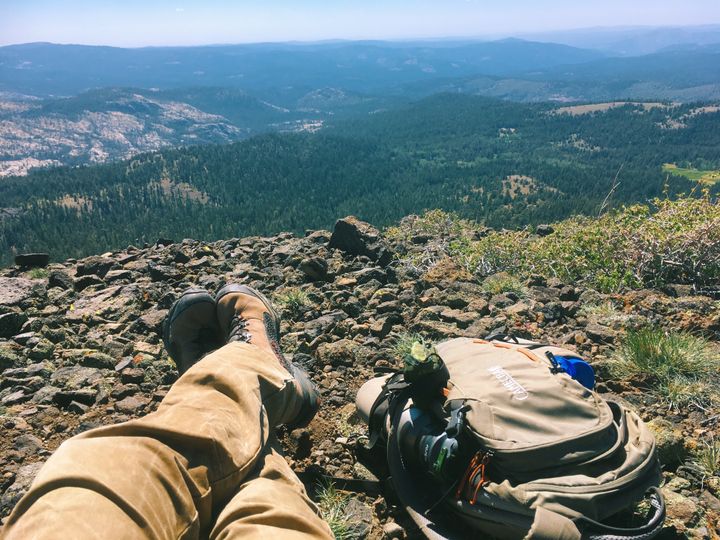
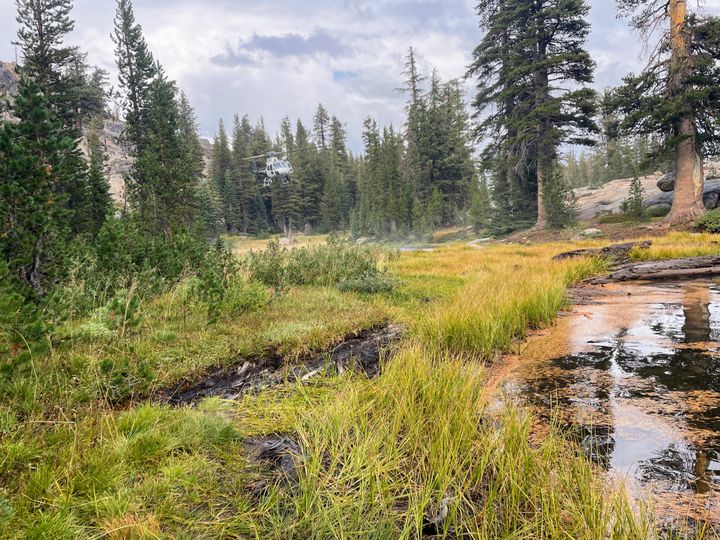
Comments ()